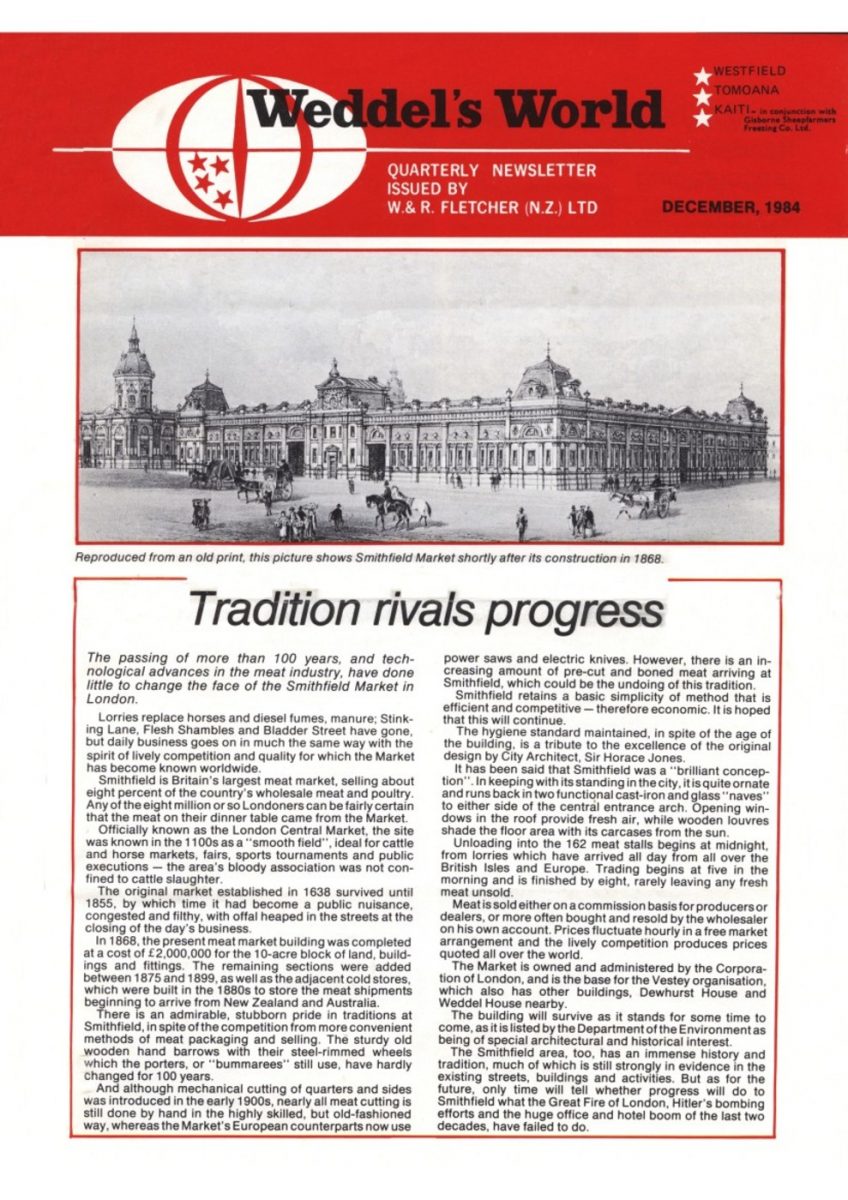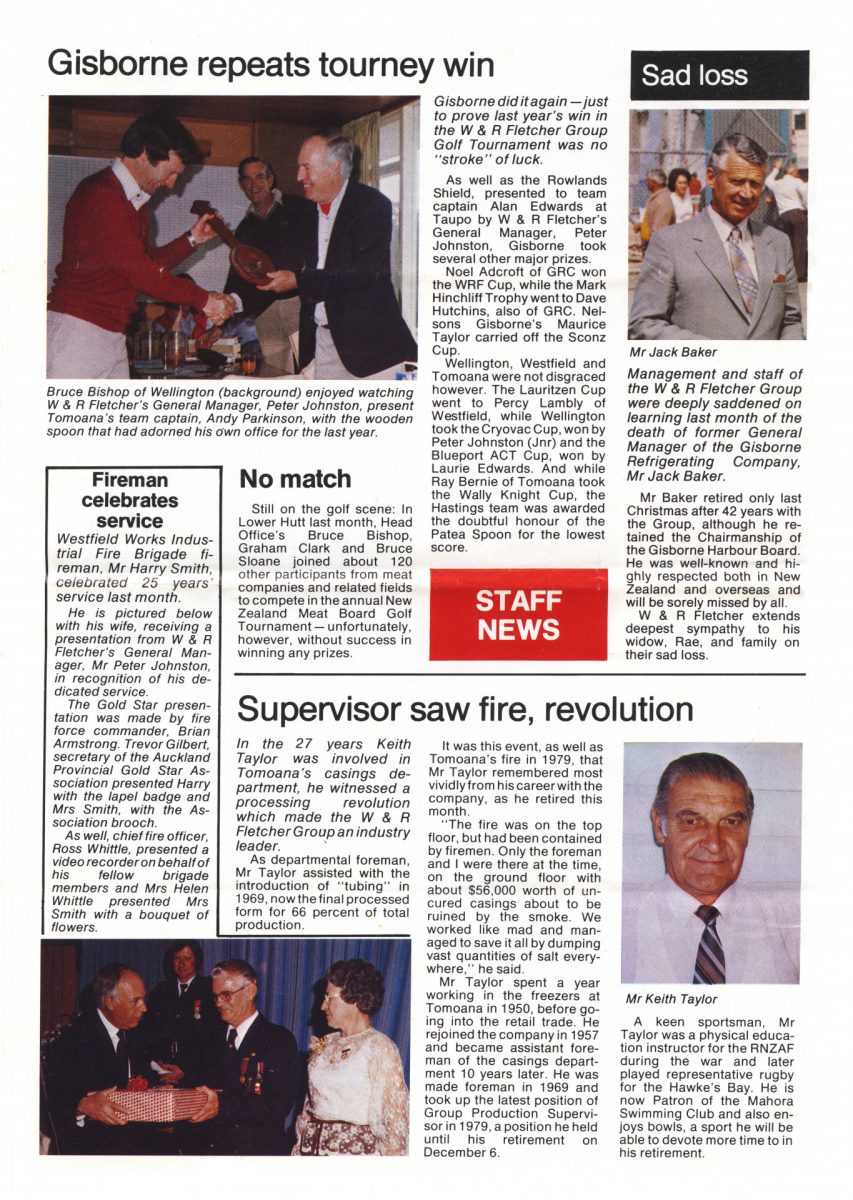S. Korea tender win encouraging
New Zealand succeeded in winning one third of a recent, 3,000 tonne beef tender in South Korea, the first since April, through Weddel and Co. Ltd in Seoul.
W & R Fletcher supplied 26,000 cartons of the quota which left for Seoul last month and Export Manager, Mr Bruce Bishop, said he hoped to see tenders becoming more frequent and in greater quantities of boneless beef, which would allow New Zealand to participate.
The government-controlled tendering system, aimed at supporting domestic beef and pork prices during periods of over supply, have been the major constraint on boosting beef exports to South Korea.
Changes to specifications, allowing increasing quantities of boneless beef, rather than the bone-in-beef primarily sought before, have however, helped New Zealand boost exports to South Korea from $NZ8 million in 1982-83, to almost $NZ16 million in the year to June 1984.
The New Zealand industry saw the latest tender success as offering encouragement for this production season.
Interest in canned range high
W & R Fletcher strengthened its already firm hold on the Fijian market for canned meats at the New Zealand Exporters’ Fair held at Suva late this year.
A full range of these, as well as meat pastes, chilled beef and lamb cuts, were on display on the WRF stand under the banners of Stinson Pearce (NZ) Ltd and the company’s agent in the islands, Pacific Mercantile Co. Ltd.
Assistant Export Manager, Mr Stuart Mills, said the main benefit of the fair for W & R Fletcher was the contact made with potential new buyers of canned meats from various Pacific countries.
The fair, organised by the Export Institute of New Zealand, was the first in Fiji for 11 years and about 50 New Zealand companies participated. Interest was high with 1,250 trade and 3,000 public visitors attending over the five days.
Deputy Prime Minister of Fiji, Mr Ratu Tonganivalu, officially opened the fair and toured the stands accompanied by New Zealand’s Minister for Overseas Trader, Mr Mike Moore.
Photo caption – From left: Mr Ken Dyer of Pacific Mercantile; Mr Stuart Mills; Mr Peter Stinson of the Stinson Pearce Group; Mr Chris Bing of Pacific Mercantile; hostess, Sala Bose.
NZ company studies world leather trade
International trends in leather demand were studied by New Zealand Light Leathers at three trade fairs held in Paris, New York and Hong-Kong this year.
As well, the company exhibited a selection of its own products, which General Manager, Mr Nigel Dobson said received favourable responses.
“There is still strong demand for garment leather worldwide, although prices are becoming very competitive. The rapid increase in New Zealand lamb pelt prices this season could however cause fashion designers to swing to materials other than leather.
“The strongest demand, however, is for lightweight nappa leather, rather than suede-type leathers, which make up the bulk of New Zealand’s production. We are having to be more innovative in producing nappa from suede-type materials, which should prove to be challenging for our technical people,” Mr Dobson said.
WRF stays on top
The Cryovac 8300B-12 rotary vacuum chamber packaging machine installed at Westfield early this month.
Capable of sealing 40 cuts a minute, the machine will enable W & R Fletcher to stay on top of the latest market requirements for further processed cuts.
It has eight vacuum chambers and is designed to work in continuous motion in a closed ‘keyhole’ shape. It measures 4.38 metres long by 2.34 metres wide and takes a range of lamb cuts from shortloins up to whole legs.
Tannery opens
Closer to home, NZLL’s third tannery is now operating in Thornbury in Invercargill.
Poor market conditions in the woolskin sector have slowed the scaling-up of operations from the experimental stage which began in March of this year, but Manager, Mr Robert Reid, said the wool skin tannery’s production is proving satisfactory.
Stunning advances
Advancement of new technology in the meat industry, coupled with importing countries’ specialised requirements, has affected many department’s processing methods.
One in particular has been the electrical stunning of all sheep, lamb and bobby calves.
To comply with the MAF requirement that all animals be rendered insensible to pain before slaughter, electrical stunning was introduced and for a number of years this has been carried out using hand held appliances. These have now been replaced by an automatic device which applies a controlled electrical current to the head of each animal. It can then be slaughtered using a knife.
Successful trials were carried out in September and the unit (pictured) has now been accepted as standard equipment at Tomoana.















Do you know something about this record?
Please note we cannot verify the accuracy of any information posted by the community.